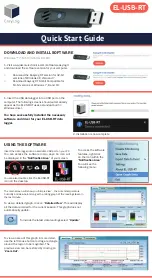
Section 8. Operation
342
Ac Noise Rejection on Large Signals
1
Restated, when the CR3000 is programmed to use the half-cycle 50 Hz or 60 Hz rejection techniques, a sensor
does not see a continuous excitation of the length entered as the settling time before the second measurement — if
the settling time entered is greater than one-half cycle. This causes a truncated second excitation. Depending on
the sensor used, a truncated second excitation may cause measurement errors.
Signal Settling Time
Settling time allows an analog voltage signal to settle closer to the true magnitude
prior to measurement. To minimize measurement error, signal settling is needed
when a signal has been affected by one or more of the following:
•
A small transient originating from the internal multiplexing that connects
a CR3000 terminal with measurement circuitry
•
A relatively large transient induced by an adjacent excitation conductor
on the signal conductor, if present,because of capacitive coupling during
a bridge measurement
•
Dielectric absorption. 50 Hz or 60 Hz integrations require a relatively
long reset time of the internal integration capacitor before the next
measurement.
The rate at which the signal settles is determined by the input settling time
constant, which is a function of both the source resistance and fixed-input
capacitance (3.3 nfd) of the CR3000.
Rise and decay waveforms are exponential. Figure Input Voltage Rise and
Transient Decay
(p. 343)
shows rising and decaying waveforms settling closer to the
true signal magnitude, V
so
. The SettlingTime parameter of an analog
measurement instruction allows tailoring of measurement instruction settling
times with 100 µs resolution up to 35000 µs.
Programmed settling time is a function of arguments placed in the SettlingTime
and Integ parameters of a measurement instruction. Argument combinations and
resulting settling times are listed in table CRBasic Measurement Settling Times
(p.
Default settling times (those resulting when SettlingTime
=
0) provide
sufficient settling in most cases. Additional settling time is often programmed
when measuring high-resistance (high-impedance) sensors or when sensors
connect to the input terminals by long leads.
Measurement time of a given instruction increases with increasing settling time.
For example, a 1 ms increase in settling time for a bridge instruction with input
reversal and excitation reversal results in a 4 ms increase in time for the CR3000
to perform the instruction.
Summary of Contents for CR3000 Micrologger
Page 2: ......
Page 3: ......
Page 4: ......
Page 6: ......
Page 30: ......
Page 34: ......
Page 36: ......
Page 96: ......
Page 485: ...Section 8 Operation 485 8 11 2 Data Display FIGURE 110 Keyboard and Display Displaying Data ...
Page 487: ...Section 8 Operation 487 FIGURE 112 CR1000KD Real Time Custom ...
Page 491: ...Section 8 Operation 491 FIGURE 116 Keyboard and Display File Edit ...
Page 496: ......
Page 502: ......
Page 564: ...Section 11 Glossary 564 FIGURE 126 Relationships of Accuracy Precision and Resolution ...
Page 566: ......
Page 594: ......
Page 598: ......
Page 600: ......
Page 602: ......
Page 624: ......
Page 642: ......
Page 643: ......
















































